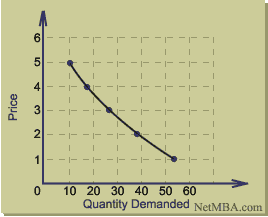I got an e-mail from Marty Sereno, professor, Cognitive Science, University of California, San Diego, regarding “Oil and Instinct.” What follows is his e-mail message (minus a last paragraph about helium) interspersed with my replies.
—
Marty Sereno: I received an undergraduate degree in geology (currently I study the brain). As evidence against an eminent peak in petroleum production/ extraction, you recently (April 13, ’05) cited the fact that another geologist wasn’t able to get a job as a well logger (yes I read through all the original posts and only just failed to repress the urge to email). Why not also consider some physical data besides prices and one geologist’s employment history?
Sam Koritz: Actually, I posted without (relevant) comment an e-mail I had received from a former well logger. I didn’t cite it as evidence, and I’m aware that anecdotes make poor arguments.
MS: In the past year, world oil use increased 2.5 million barrels/day. This one-year increase is more than the entire current output of Iraq (1.5 million barrels/day), and almost as much as the output of Iraq in the halcyon days of the ’80s (3.5 million barrels/day). We are not close to finding an Iraq’s worth of oil every year (could this have something to do with the employment picture for geologists?). Iraq is generally assumed to contain perhaps 12% of the remaining oil on the planet. I don’t see how energy sources “have changed relatively painlessly since the dawn of the industrial age.”
SK: What I mean by “relatively painlessly” is that during the time in question the world experienced an unprecedented increase in health, wealth, liberty and longevity.
MS: After the deforestation of Europe (just after the time of Malthus, incidentally), coal was first mined and then oil and gas were drilled and pumped. Where’s the change? The so-called ‘production’ of coal, oil, and gas continues faster than ever (for now!). I’ve assembled a bunch of graphs and data on oil production and reserves, and the current status and prospects for alternative energy sources (hydrogen is not an energy source) here [PowerPoint] or here [pdf file].
SK: Where’s the change? The change is in the types and amounts of fuel used since the dawn of the industrial age. As your “World Primary Energy Mix” chart shows, oil was not used as fuel in significant quantities a century ago, but by the late 20th century it had surpassed coal (which had previously surpassed biomass) as the most-used fuel source. It’s true that worldwide coal production has increased in an absolute sense but it has declined on a per capita basis, and large, modern nations have reduced coal consumption on an absolute basis, while increasing per capita wealth. For example, according to the British government’s 2001 document, “Trends in coal production and consumption“: “Coal consumption in the UK has declined at an average annual rate of 3 per cent from its peak in 1956.”
MS: The current ratio of renewable energy sources such as oil + gas + coal to photovoltaic + wind is currently 1400 to 1. Changing that ratio to something closer to 1 to 1 doesn’t sound “relatively painless” to me. For one, replacing world electrical generation with photocells would use use up three times the total amount of silver currently thought to exist on the planet. Running your $50,000 20 kWh/day roof top solar cell system for a day would generate the equivalent amount of energy to what is found (yes, found) in about a half a gallon of gas (a car is a 100,000 watt device). And that’s assuming you used the energy immediately. Storing the energy in batteries or hydrogen and then getting it back out of them involves substantial losses both ways. I can hear people groaning, Who wants to actually learn something about the difference between kilowatts and kilowatt-hours, or silver deposits, or how to grow food? Well tough luck. Endless bloviation about money isn’t going to fix things. The data seems pretty clear to me. If you have other data suggesting a different conclusion, I’d like to see it. Where is the “junk science”? Money doesn’t make the current world go: oil, coal, gas, biomass, nuclear, hydroelectric, human and animal muscle (remember horses and slaves?), and photocells do, in that order. …
 SK: Money, or rather economics, has everything to do with which of the things that make the world go are used and in what quantities. Economics explains, for example, why the amount of wealth created from each unit of fuel is increasing over time — even as the total quantity of the fuel on Earth decreases.
SK: Money, or rather economics, has everything to do with which of the things that make the world go are used and in what quantities. Economics explains, for example, why the amount of wealth created from each unit of fuel is increasing over time — even as the total quantity of the fuel on Earth decreases.
There are two parts to the peak oil debate: (1) that oil production is, or will soon be, in decline, and (2) that unless governments prepare for this decline it will lead to a significant crisis. I don’t believe oil production is in decline because: oil production keeps increasing, previous estimates of oil and other commodity shortages have been consistently wrong, and the price of oil does not appear to be in a long-term up trend, as one might expect if there were a supply shortage. The (inflation-adjusted) price of oil is lower than it was 25 years ago but higher than it was few years ago. The recent price rise is unsurprising, considering the surge in demand for commodities caused by China’s economic boom. Compare for example this oil price chart — here — with this iron ore price chart: here.
Regardless, both economic theory and history suggest that the market is capable of adjusting, without major crisis, to commodity depletion.


